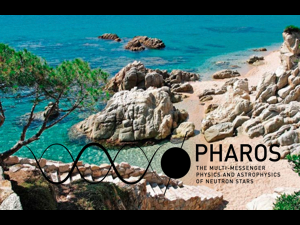Speaker
Prof.
Francesca Gulminelli
(LPC/ENSICAEN)
Description
The importance of microphysical inputs from laboratory nuclear
experiments and theoretical nuclear structure calculations in the
understanding of the core collapse dynamics, and the associated
neutrino luminosity, is largely recognized in the recent literature.
Different recent sensitivity studies [1,2] have shown that mass models,
electron capture rates, and the equation of state can all play a role in the
determination of the electron fraction evolution and the dynamics of
the shock formation.
In this work, we analyze independently the effect of
(i) the mass model and the possible quenching of magicity of neutron rich nuclei,
(ii) the use of realistic nuclear rates based on large scale shell-model calculations
(iii) the account of the full nuclear distribution beyond the single-nucleus approximation.
The independent variation of the different quantities is made possible by the use of
a recently developed method [3] to calculate the nuclear distribution
associated at finite temperature to any given equation of state of
stellar matter based on the Wigner-Seitz approximation.
Simulations are performed within a general relativity collapse code
in spherical symmetry with a multi-group treatment of neutrinos, using a simplified leakage scheme [4].
Our results indicate that the use of a realistic nuclear distribution and of up-to-date
capture rates on exotic nuclei is essential to produce reliable results, while the simulations are
relatively robust with respect to the other poorely constrained part of the nuclear
interaction.
[1] A.Raduta et al., Phys. Rev. C 93, 025803 (2016) and Phys. Rev. C 95, 025805 (2017)
[2] C.Sullivan et al, Astropys. J. 816, 44 (2016)
[3] G.Grams et al, Phys. Rev. C 97, 035807 (2018)
[4] J.A.Pons et al, (1996); A.Fantina, PhD thesis (2010)
Primary author
Prof.
Francesca Gulminelli
(LPC/ENSICAEN)
Co-author
Dr
Anthea Francesca Fantina
(Grand Accélérateur National d'Ions Lourds (GANIL))

